Pet stain cleaning requires understanding different types of stains, selecting appropriate cleaning methods based on cause, and using the right tools and products. Gather essential supplies, protect yourself and pets, and follow a strategic approach for effective removal. Use natural solutions like vinegar, baking soda, essential oils, and castile soap for safe and gentle cleaning. Maintain cleanliness by regular vacuuming, mopping, and pet-friendly treatments to prevent recurrence.
Looking to reclaim your clean home from persistent pet stains? This comprehensive guide is your solution. We’ll walk you through understanding common pet stain types and their causes, preparing for a deep clean, and providing essential tools and techniques. From step-by-step cleaning methods to dealing with challenges and natural solutions, we’ve got you covered. Learn how to maintain a fresh, pet-friendly environment post-cleaning and say goodbye to unsightly stains once and for all.
Understanding Pet Stains: Types and Causes
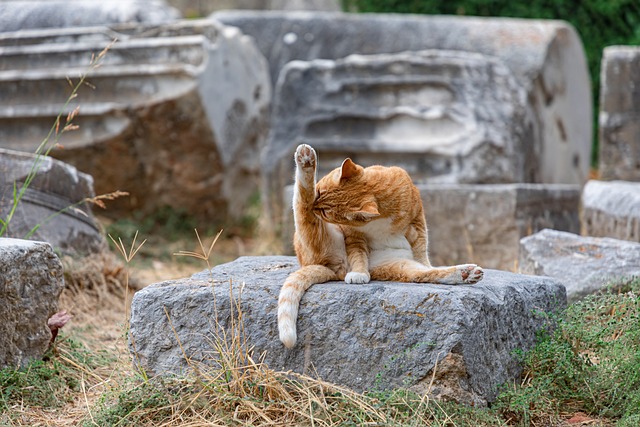
Pet stains can vary greatly in appearance and composition, from urine and fecal deposits to paw prints, vomit, and even pet hair. Understanding these different types of stains is crucial for effective cleaning. Urine and fecal stains, for instance, contain amino acids and urea that can leave behind a strong odor if not properly addressed. Paw prints often consist of dirt, mud, or other debris embedded in the carpet fibers, requiring a gentle yet thorough approach to remove.
Causes range from routine wear and tear—like tracked-in dirt or accidental spills—to behavioral issues like marking territories or house training problems. Identifying the source is essential for choosing the right cleaning methods. Different stains need different treatments; what works for urine might not be suitable for vomit, for example. Pet stain cleaning involves using the right tools, techniques, and products to ensure that not only is the visible stain removed but also any lingering odors or bacteria.
Preparing Your Home for Deep Cleaning
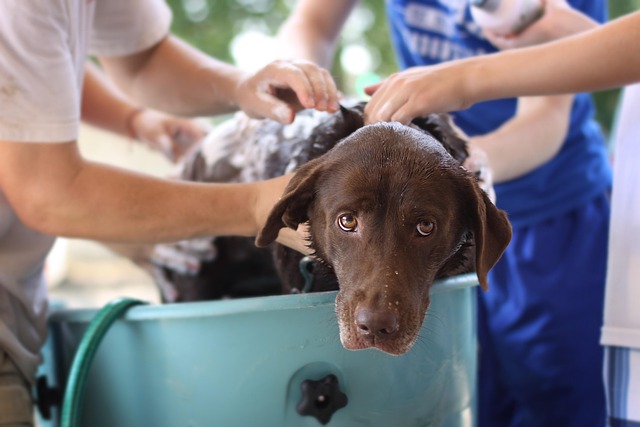
Before diving into deep cleaning, preparing your home is key to effective pet stain cleaning. Start by gathering all necessary supplies like a vacuum cleaner with powerful suction, a carpet cleaner specifically designed for pet stains, enzyme-based cleaners, and odour eliminators. Remove any furniture or obstructions that might restrict your movement while cleaning. Empty wastebaskets and ensure good ventilation throughout the house to prevent ammonia build-up from urine stains.
Create a safe environment for pets by confining them to a separate area using baby gates or kennels. This step is crucial as it prevents accidents during the cleaning process. Protect yourself by wearing gloves, especially when handling tough pet messes like vomit or feces, to minimize direct contact and potential health risks.
Essential Tools and Materials for Effective Cleaning
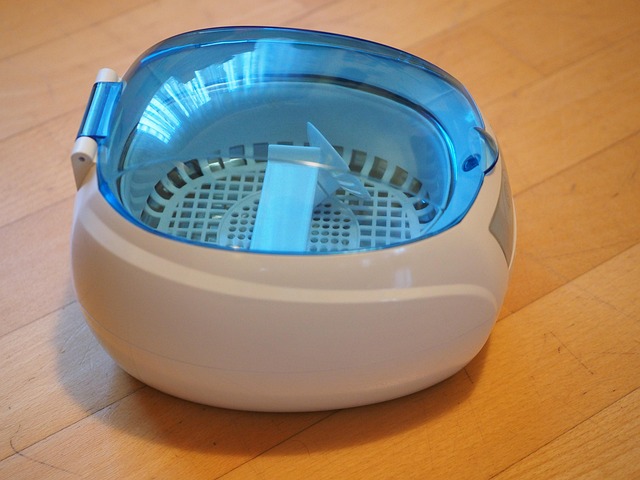
Deep cleaning pet stains requires the right tools and materials for effective removal. Start with high-quality solutions like enzyme-based cleaners, which are specifically designed to break down organic matter, making them ideal for tackling pet messes. These powerful yet gentle cleansers can handle various types of stains, from urine to feces, without leaving behind harsh chemicals.
Don’t forget the essential accessories: absorbent cleaning cloths or sponges, a sturdy brush for scrubbing, and plastic gloves for protection. Using these tools in conjunction with your chosen cleaner will ensure efficient pet stain cleaning, leaving your surfaces fresh and odor-free.
Step-by-Step Guide to Deep Cleaning Pet Stains
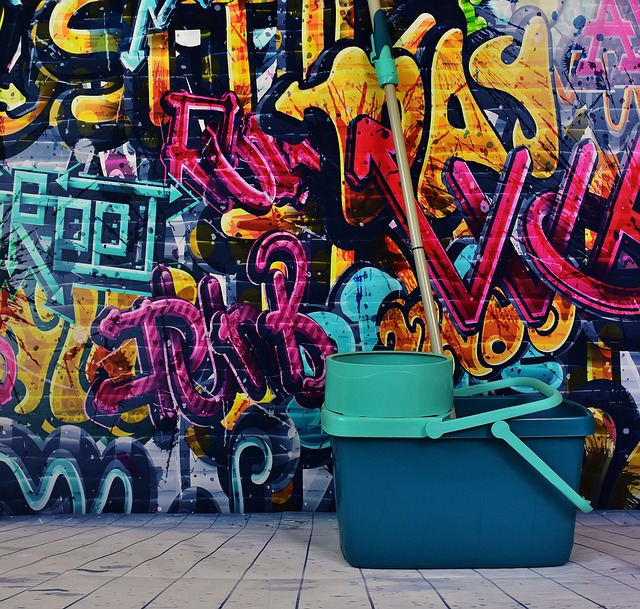
Deep Cleaning for Pet Stains requires a systematic approach to ensure thorough removal and prevention of odours. Here’s a step-by-step guide to tackling pet stain cleaning effectively. Firstly, identify the type of stain and pet (e.g., urine, faeces from dogs or cats). Different animals produce distinct substances with varying chemical compositions, necessitating tailored cleaning methods.
Next, blot the affected area gently using absorbent materials like paper towels or a clean cloth to prevent spreading. Avoid rubbing, which can push the stain deeper into fibres. After blotting, mix a solution of warm water and a mild detergent designed for pet stains. Apply this mixture to the stain, working from the outer edges towards the centre. Let it sit for several minutes, allowing the cleaning solution to penetrate and break down the organic matter. Then, rinse thoroughly with clean, warm water to remove any residual detergent or stain. Finally, dry the area completely using a fan or natural ventilation to prevent odour reoccurrence.
Dealing with Common Pet Stain Challenges

Dealing with pet stains can be a common challenge for many homeowners. From fur and dander to accidents in the living room, these messes require specific attention to ensure thorough cleaning. One of the primary issues is that pet stains often set in quickly, making them harder to remove. The best approach is to act fast, blotting the stain with a clean cloth or paper towel to absorb as much of it as possible before applying the appropriate cleaner.
Another challenge is that different types of stains require unique cleaning methods and products. For instance, urine stains may require specific enzymes to break down the odor, while solid matter like feces necessitates a strong yet safe detergent. Using the right cleaner for the specific stain type ensures better results and minimizes damage to fabrics or flooring. Regular deep cleaning sessions can help maintain a fresh and pet-friendly environment by addressing these common challenges proactively.
Natural Cleaning Solutions for Pet Stains

When it comes to tackling pet stains, there are numerous natural cleaning solutions that can be just as effective as commercial products. One popular choice is white vinegar, which acts as a powerful yet gentle disinfectant and deodorizer. Diluting it with water and using it to wipe down surfaces or spot-clean carpets can help remove odors and stains left behind by pets. Baking soda is another versatile cleaner; its abrasive properties make it ideal for scrubbing stubborn marks, while its natural odor neutralization capabilities freshen the air.
Essential oils like tea tree oil or lemon essential oil not only add a pleasant aroma but also possess antibacterial and antifungal properties, making them excellent additions to your pet stain cleaning arsenal. For carpets, mixing these essential oils with water and using a spray bottle can help lift stains without leaving behind harsh chemicals. Additionally, plant-based cleaners like castile soap are gentle on both surfaces and pets’ sensitive skin, offering a safe and natural way to clean up after furry friends.
Maintaining a Clean Environment Post-Cleaning
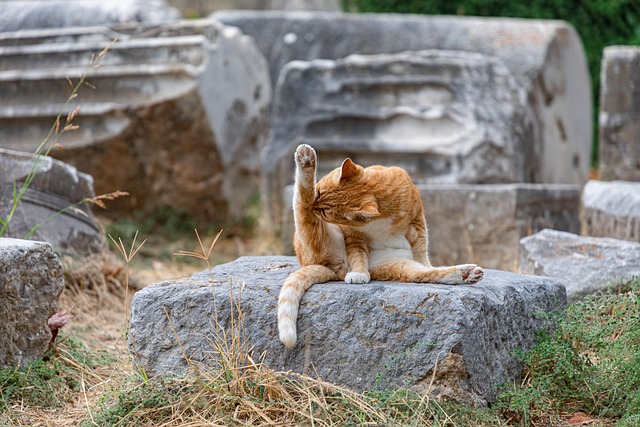
After successfully removing stubborn pet stains, maintaining a clean environment is crucial for preventing reoccurrence. Regular vacuuming and mopping can help eliminate loose fur, dander, and any remaining pet-related debris. Investing in high-quality cleaning supplies designed specifically for pet stain cleaning is beneficial; these products are often enzymatic or oxygen-based, ensuring thorough disinfection without harsh chemicals that could irritate your home’s atmosphere.
Encouraging good hygiene practices among all household members, especially after interactions with pets, is essential. This includes washing hands frequently and changing clothing to minimize the spread of pet dander and allergens. Additionally, regularly treating upholstery, carpets, and curtains with suitable pet-friendly cleaning solutions can help maintain a fresh and clean space, making it easier to manage future pet messes.
